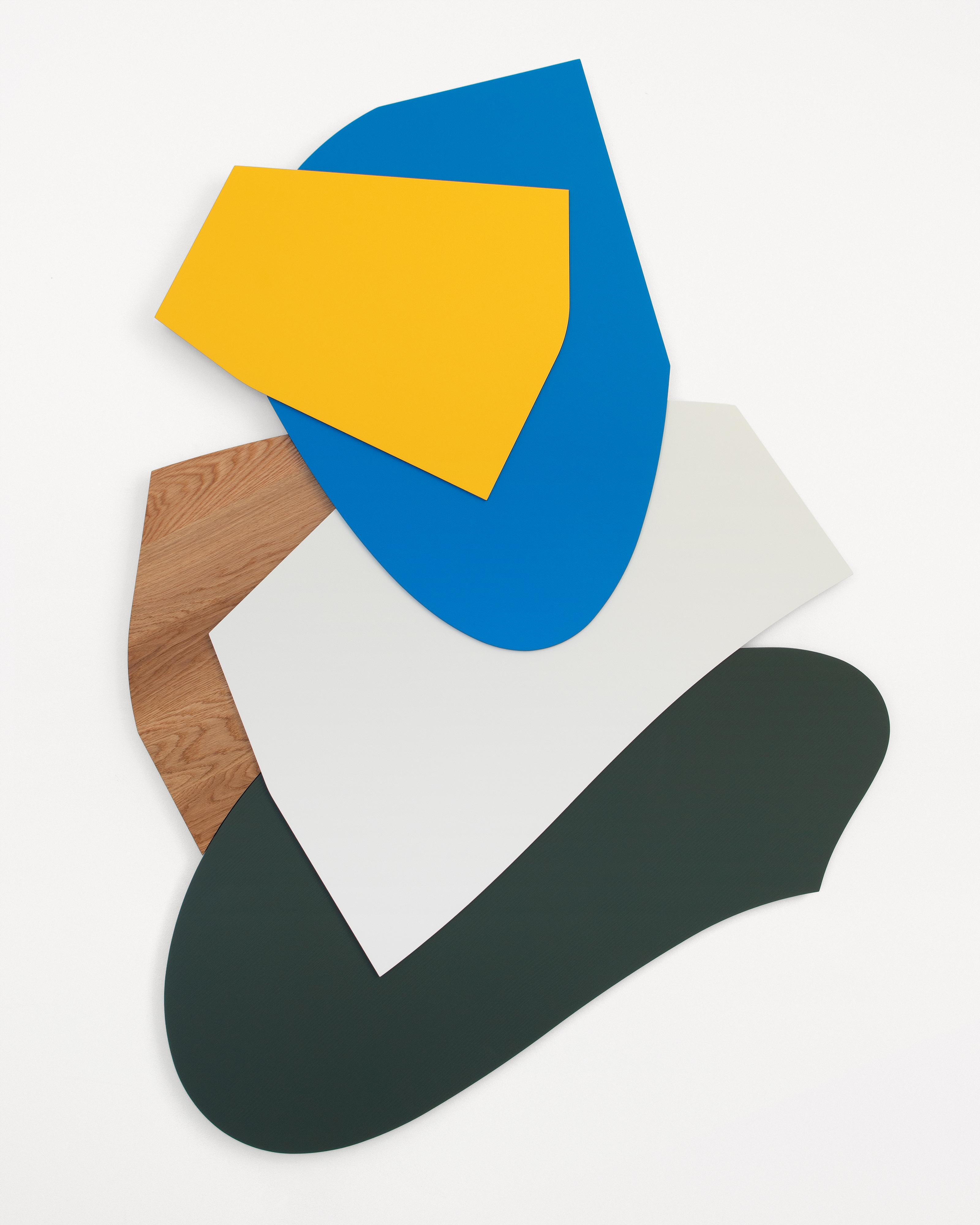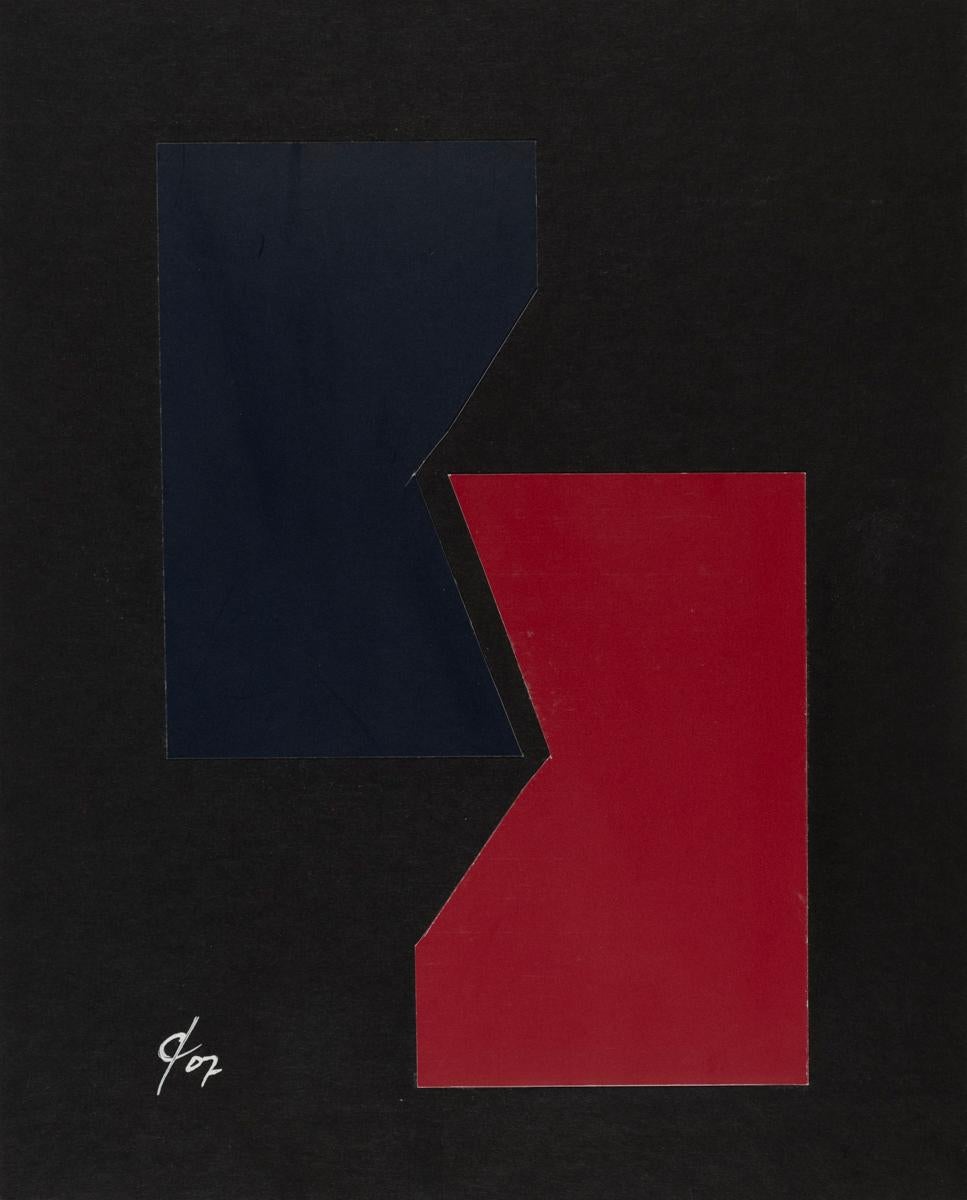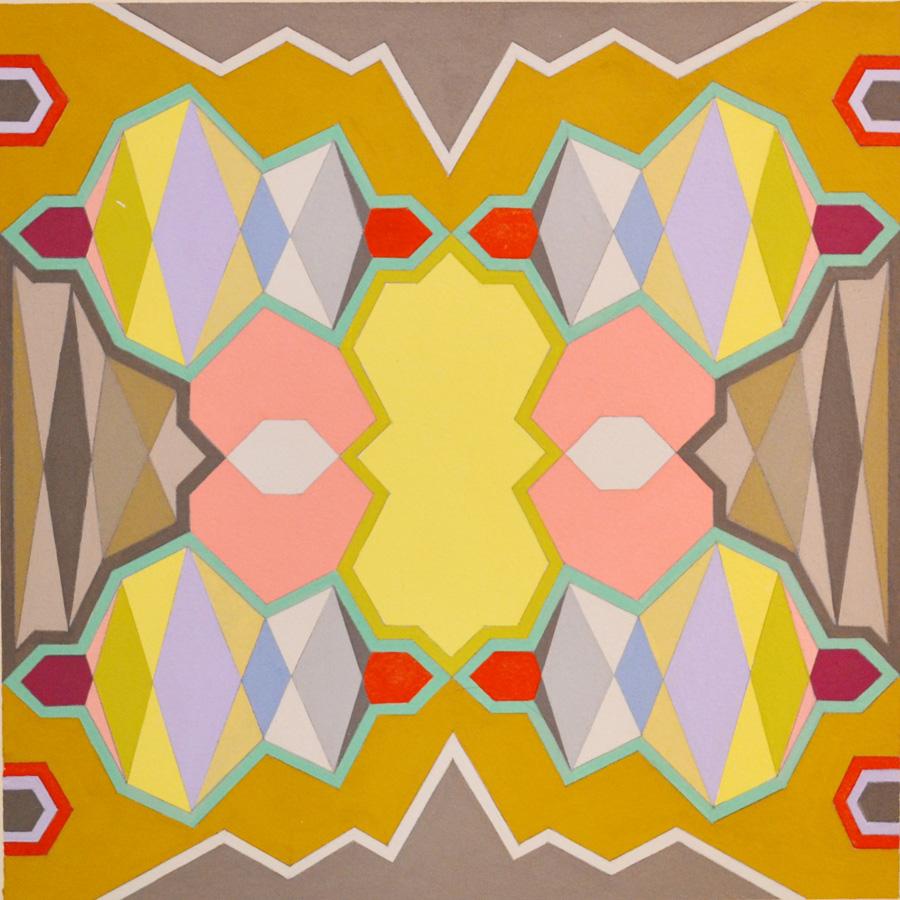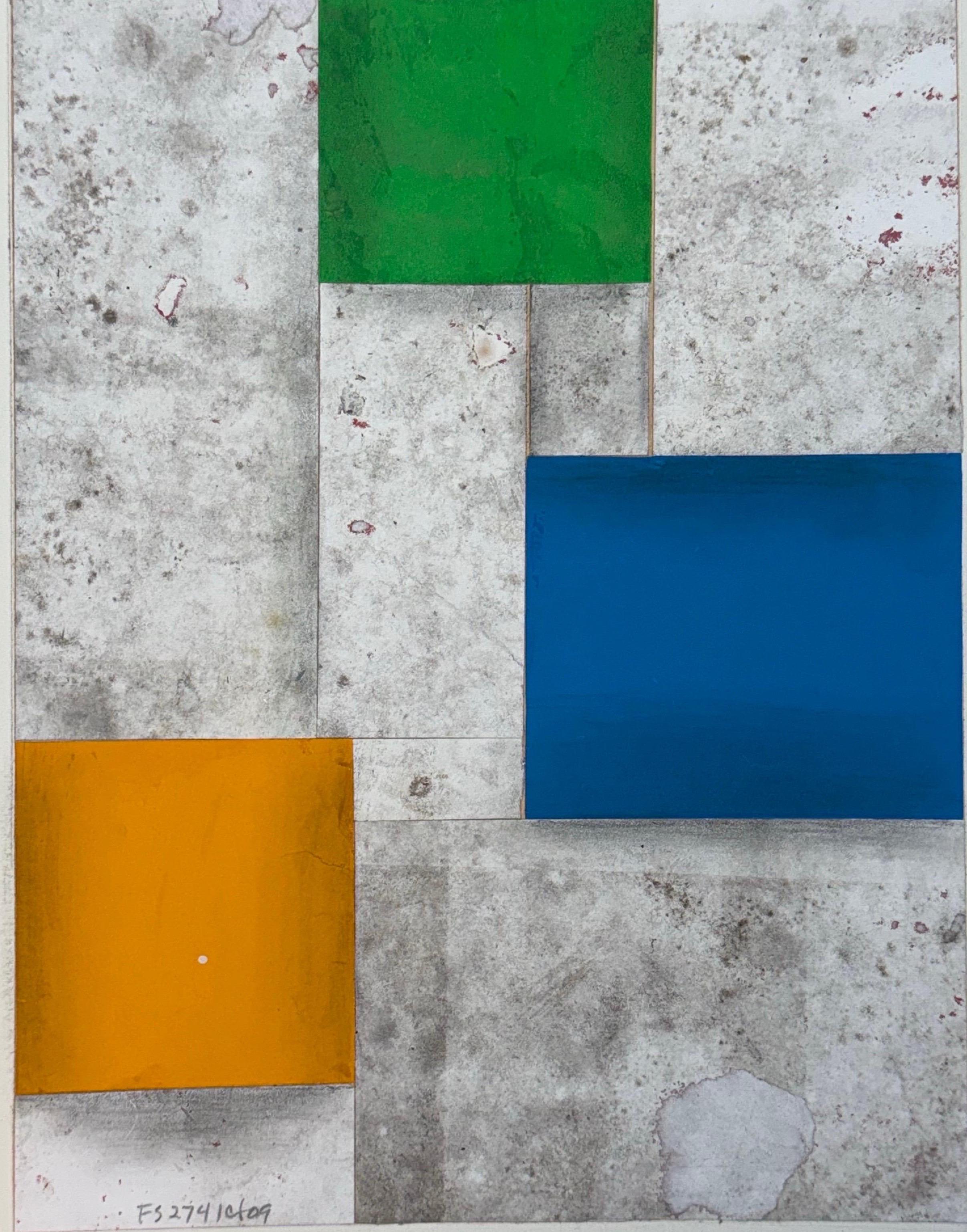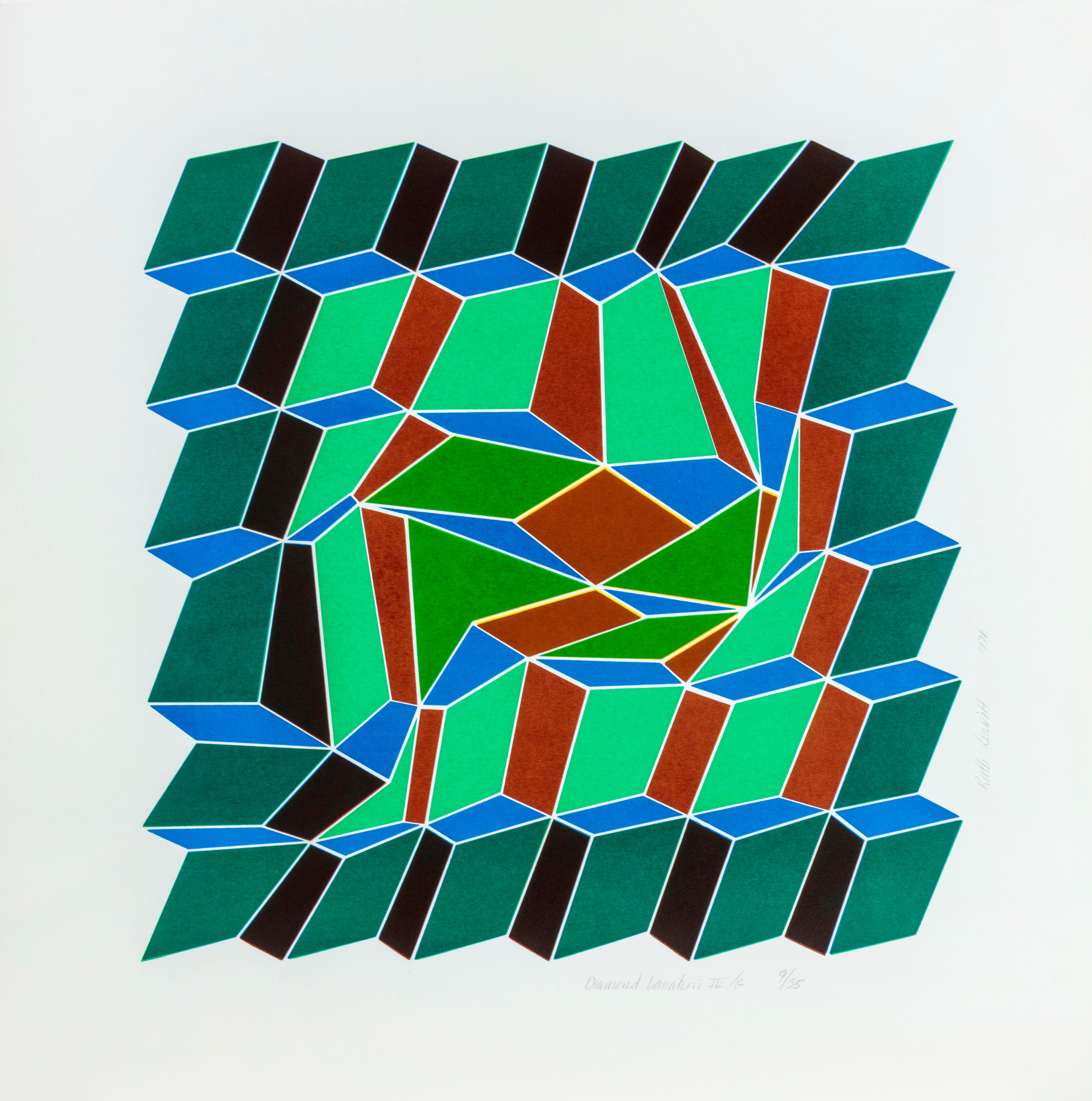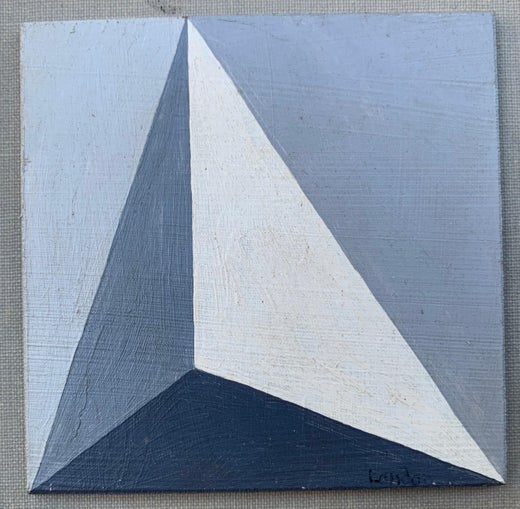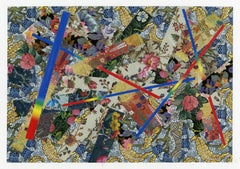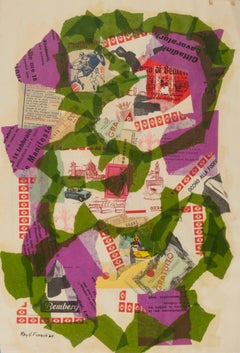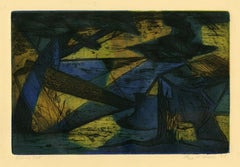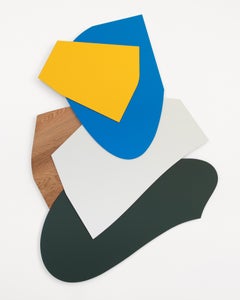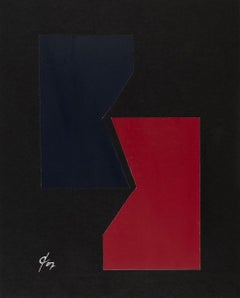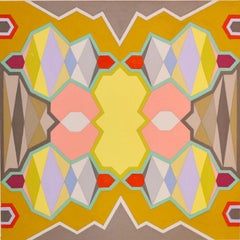Untitled
Printed paper collage elements on cardboard, 1960
Signed in pencil lower right
Condition: Excellent
Board size: 13 3/8 x 15 1/2 inches
Provenance: Estate of the Artist
By descent
Herb Lerner, Boca Raton
Edward Landon (1911 - 1984)
Edward August Landon was born March 13 in Hartford, Conn., to Per and Matilda Landin, recent arrivals from Sweden. The youngest of three children he enrolled in the Hartford Art School while completing his studies, and is where he became involved with a local theater company. His Bohemian wanderings with the troupe inspired a deep affection for the theater, dance and music, all-important themes manifested in numerous examples in his future work. By the late 1920's, determined to become an artist, Landon set out for New York City. He
naturally gravitated toward Greenwich Village where he attended classes at the Art Students
League, learning to draw from the figure and confidant that he could "figure the rest out for
(him)self." He returned to Hartford at the start of the Depression where he was befriended by
Elisabeth McCausland. McCausland would emerge during the 1930's as leading scholar on
contemporary American art, and included Landon in her circle of artists and writers who met
regularly at her apartment. It was through this association that he was to meet Gertrude Stein,
Marcel Duchamp, Georgia O'Keefe, Paul Strand, Arthur Dove and others associated with the
most advanced currents in the modern arts. At twenty-two, Landon was well into an
investigation of Surrealism and with McCausland's influence became an eager student of
abstraction. Awarded a scholarship grant from the Guggenheim Foundation (1939-1941),
Landon created a series of abstract geometric paintings included in the 1942 show at the
Guggenheim Foundation.
During the latter 1930's and a student of the Art Student League, Landon made his first acquaintances with artists experimenting with silkscreen. As soon as he had learned the technique, Landon became so intrigued that he turned his back on paintbrushes and canvas in
favor of the squeegee and stencil. Though Landon's formal style would change over the years, his anti-academic, non-conformist attitude would color his approach to art and the medium, as well as his approach to life. Uninterested in replicating brushstrokes, surface density or other characteristics generally associated with painting, Landon respected this new medium's inherent qualities which for him involved simplifying his compositions, hardening the edges of his forms and replacing the illusion of deep space with flat areas of color. Landon became a pioneer in the development of serigraphy (an original American method of fine color printmaking) and from the early forties until his death in 1984, he devoted the greater balance of his artistic expression to this medium. He was awarded a Fulbright Research Fellowship to Norway (1950-1951) where he introduced the process to European artists in
Norway and Sweden. He was president of the National Serigraph Society and was editor of "Serigraph Quarterly".
His body of work includes over 750 serigraphs, many of which are included in all major public print collections including the Bibliotheque National, Paris; the 2 Library of Congress; Moderna Museet, Sweden; Tel Aviv Museum, Israel; Turku Museum,
Finland; Victoria and Albert Museum, England; Boston Museum of Fine Arts; British Museum; Carnegie Museum of Art; Cincinnati Museum of Art; Portland Art Museum; Seattle Art Museum; Whitney Museum of American Art; Library of Congress; and over 15 College and University Art collections nationwide. His print "Buffoon" together with color separation proofs has been on permanent display as representing the medium at the Smithsonian Institution in Washington D.C. Courtesy Edward Landon
Edward August Landon 1911-1984
(Born and died in Hartford, CT; lived and worked mostly in New York City)
Edward Landon, painter, printmaker, and sculptor, dropped out of high school to enroll in the Hartford Art School. He eventually moved to Greenwich Village in New York to study at the Art Students League with Guatemalan abstract expressionist Carlos Merida (1891-1984). Another important artist he would be indebted to was Arthur Dove, who encouraged his venture into the art of abstraction.
In 1939, Landon was awarded a Guggenheim Fellowship to work on Non-Objective Painting. He eventually became intrigued with the silkscreen process and turned away from painting, helping to organize the group known as the National Serigraph Society, and becoming editor of its publication, the “Serigraph Quarterly.” He served as president of the Society and helped with exhibitions, lectures, and demonstrations.
In 1950, he was awarded a Fulbright Grant to study in Norway, where he lectured on serigraphy and arranged serigraph exhibitions.
Landon is credited with more than 240 silkscreen prints and is recognized as one of the most outstanding and accomplished silkscreen printmakers of his time. Some of his notable abstract prints are, "Arrangement with Blue Major," inspired by his love of music; "Nothing Begins, Nothing Ends," and "Time Silhouette," relating to his studies of Nordic cultures.
Courtesy: AskArt and Eteichertfineprints
